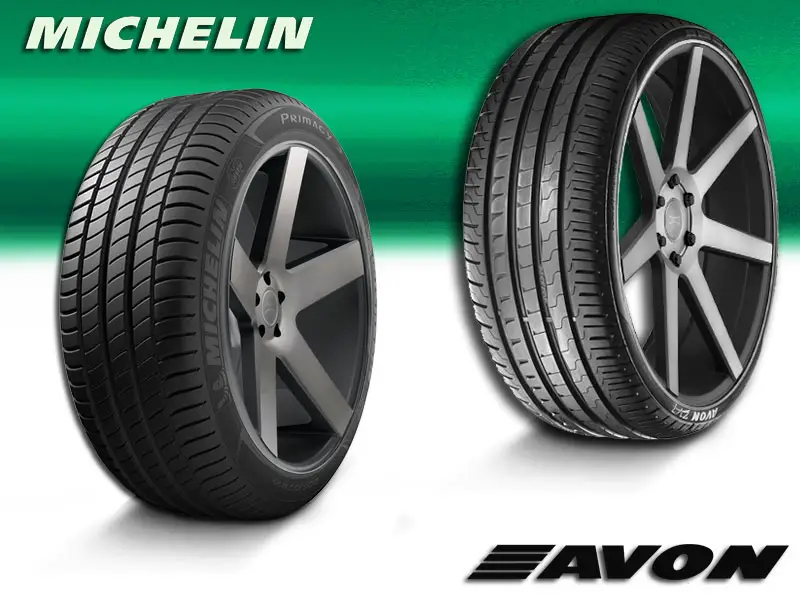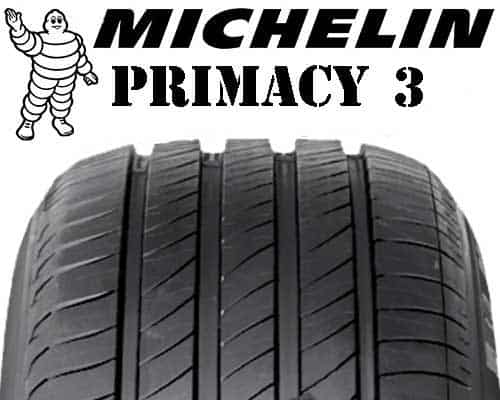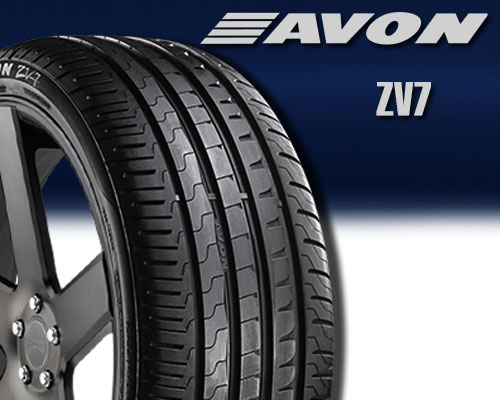Comparing Michelin Primacy 3 with Avon ZV7: The Michelin Primacy 3 and Avon ZV7 are two notable tire models, each offering distinct features and benefits for drivers.
The Michelin Primacy 3 is renowned for its superior grip and safety on both dry and wet roads, boasting advanced technology for enhanced traction and durability.

Examine the treads on these tires closely. They hold the key to knowing which to choose. In fact if you visit my "tread design" page, picking the right tire would never bother you.
Meanwhile, the Avon ZV7 is recognized for its exceptional handling and noise reduction, catering to drivers who prioritize comfort and performance. Both tires represent their respective brands’ commitment to quality, safety, and driver satisfaction.
Table of Contents
About These Brands
Michelin, a French tire manufacturer, is one of the world’s largest and most respected tire brands. Founded in 1889, it has a long history of innovation and quality.

Michelin is known for producing a wide range of tires that cater to various vehicles, including cars, trucks, motorcycles, and airplanes. The brand is recognized for its emphasis on safety, longevity, and fuel efficiency. Michelin is also famous for its involvement in motorsports and the prestigious Michelin Guide for restaurants.
Avon Tyres, based in the United Kingdom, has been making high-quality tires since 1904. Though not as large as Michelin, Avon has built a reputation for producing reliable and high-performing tires for cars, motorcycles, and vans. The brand is known for its focus on road handling and performance, particularly in wet conditions. Avon Tyres is also involved in motorsport, supplying tires for racing and historical vehicles.
Diving into the Avon ZV7, it sports an asymmetric tread design, cleverly incorporating a column of tread blocks flanked by two robust ribs.

This tire is decked out with four substantial longitudinal grooves, noticeably omitting lateral ones. It’s peppered with an abundance of sipes, more so than its Michelin counterpart, featuring 3D sipes and wider longitudinal channels.
Notably, its shoulder grooves are deeper, upping the shoulder pitch length. The tread blocks are meticulously arranged for optimal performance.
Switching gears to the Michelin Primacy 3, this tire also embraces an asymmetrical pattern of tread blocks. It’s equipped with two longitudinal grooves, sandwiching a tread block column that boasts inclined sipes with greater depth.
A unique feature is its extended lateral grooves, giving it an edge in aquaplaning resistance.
These lateral channels are angled precisely, and the tire’s shoulders are bold and seamlessly integrated with the tread. It’s constructed from a tougher, less pliable rubber.
Road Grip Comparison
The Avon ZV7’s high void ratio results in a smaller contact patch. It records a dry braking distance of 36.93 meters, just a tad longer than the Michelin. This suggests a slightly lesser grip in dry conditions.
But, when the skies open up, the ZV7 shines with a superior wet braking distance of 36.13 meters, thanks to its increased sipes, outperforming its Michelin rival in wet grip.
The Michelin Primacy 3, flaunting a larger contact patch, nails a shorter dry braking distance of 35.7 meters, indicating a more reliable dry grip.
However, in wet conditions, it doesn’t quite keep up, with a wet braking distance of 50.6 meters, implying reduced effectiveness on slick roads.
Handling Comparison of the tires
In handling, the Avon ZV7’s broader lateral grooves on the shoulders mean a slightly lower dry handling speed of 111.4 km/h.
Yet, its wealth of sipes pays off in damp conditions, pushing its average wet handling speed to 74.5 km/h, surpassing the Michelin.
Conversely, the Michelin Primacy 3’s narrower shoulder grooves contribute to a higher average dry handling speed of 113.7 km/h.
However, fewer sipes mean it lags in wet handling, clocking in at just 67.7 km/h.
Comparison of Hydroplaning Resistance
Despite its wider grooves, the Avon ZV7 lags in hydroplaning resistance. The shallower sipes hinder efficient water expulsion, resulting in a lower floating speed of 87.3 Km/H.
On the other hand, the Michelin Primacy 3 excels in this arena.
Its deeper sipes and grooves facilitate better water clearance, granting it a superior hydroplaning resistance with a floating speed of 95.3 Km/H, outperforming the Avon ZV7.
Comparison of Rolling Resistance
Delving into the world of rolling resistance, we find it to be the force needed to keep a tire moving forward. Essentially, the more a tire contacts the ground, the greater its rolling resistance, and the reverse is also true.
The Avon ZV7, with its minimal contact patch, experiences reduced friction against the surface, leading to a lower rolling resistance.
This efficiency translates to less fuel consumption, making the Avon ZV7 a more fuel-efficient choice compared to its Michelin counterpart.
The Michelin Primacy 3, conversely, has a broader ground contact due to its narrower grooves, resulting in increased friction between the tire and the road. This heightened friction necessitates more force for movement, thus elevating the rolling resistance.
Consequently, the Michelin Primacy 3’s higher rolling resistance leads to greater fuel consumption, marking it as less fuel-efficient.
Comfort and Noise Comparison
When it comes to comfort and noise levels, the Avon ZV7’s marginally wider grooves trap more air molecules, leading to increased noise production as these molecules repeatedly strike the tread block walls.
At high speeds, this results in a noise level of 73.4 dB, slightly higher than its Michelin rival.
The Michelin Primacy 3, with its slightly lower void ratio, captures fewer air particles, thereby generating less noise.
This characteristic makes it quieter, producing a sound of 71.8 dB, and more suitable for high-speed journeys.
Durability and Treadwear Differences
In terms of durability and tread wear, the Avon ZV7, despite its lower rolling resistance and tread wear, falls short in durability compared to the Michelin.
This is attributed to its slightly inferior build quality, which impacts its longevity and mileage negatively.
The Michelin Primacy 3, despite its higher rolling resistance and tread wear, outperforms in durability.
Its superior build quality and material strength contribute to better mileage and an extended lifespan.
Price Differences
Pricing plays a crucial role as well. The Michelin Primacy 3 commands a higher price due to its overall robust performance, superior build strength, and enhanced mileage.
In contrast, the Avon ZV7, while less durable, offers exceptional wet grip and handling, making it a preferred and more affordable option among its competitors.
How these tires were tested?
Braking Tests:
Dry Braking: The tire’s performance is measured by braking from a certain speed (often 100 km/h) to a complete stop on a dry surface. The distance taken to stop is recorded.
Wet Braking: Similar to dry braking, but conducted on a wet surface to assess how quickly the tire can stop in rainy conditions.
Handling and Cornering Tests:
Slalom Test: This involves driving through a series of cones placed in a zigzag pattern at a consistent speed. It tests the tire’s responsiveness and stability during sudden changes in direction.
Skid Pad Test: A circular track is used to evaluate lateral grip and stability in cornering. The maximum speed at which the car can travel without losing grip is measured.
Hydroplaning Resistance
A special track with a layer of water is used. The car is driven at increasing speeds until the tires lose grip and start hydroplaning. The speed at which this occurs is noted, indicating the tire’s ability to resist hydroplaning.
Rolling Resistance
Measured in a controlled environment, often on a flat and smooth track. The force required to keep the tire rolling at a steady speed is measured, indicating its efficiency and impact on fuel consumption.
Noise Level Test
Conducted by measuring the decibel level of the noise produced by the tires at various speeds. This is often done in a quiet and controlled environment to ensure accuracy.
Durability and Tread Wear
Long-term tests are conducted over thousands of kilometers to observe how the tire wears over time. This includes measuring tread depth at regular intervals and checking for any irregular wear patterns.
Comfort Test
Subjective assessments are made by drivers who evaluate the ride quality, including the tire’s ability to absorb shocks from road imperfections.
Quick Summary
To summarize, both tires are high-performance summer options. The Michelin Primacy 3 excels in dry grip, while the Avon ZV7 shines in wet conditions thanks to its abundance of sipes.
The Michelin’s inclined lateral grooves afford it superior dry handling, and its deep shoulder sipes help prevent aquaplaning on wet roads.
While the Michelin Primacy 3 boasts greater durability and mileage due to its construction, the Avon ZV7 offers a more cost-effective solution with commendable performance.




